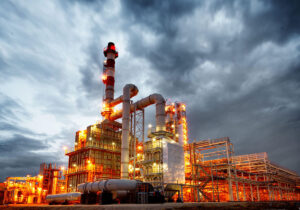The petrochemical industry is always of special importance among industries due to its high contribution to the country’s foreign exchange as well as its role in completing the value chain of the oil industry. In terms of volume, petrochemical exports have grown by about 9% in the first 11 months of 2019 compared to the same period in 2018. Despite the increase in the volume of petrochemical production in recent years, as well as planning for its continuation in the second and third step of the jump in petrochemical production during the years 2021 and 2025, investigations show the lack of diversity in the structure of the export of petrochemical products in the country in terms of “diversity of products” and “diversity of target countries”. Currently, China is the largest trading partner of Iran’s petrochemical products, while maintaining and strengthening stable relations with China in order to provide long-term benefits should be the priority of the country’s economic diplomacy.
Diversification of petrochemical products and customers will reduce the vulnerability of this industry. Diversification of products will be possible through increasing the level of technology in petrochemicals and developing downstream industries. Currently, a major part of the country’s petrochemical exports are basic products such as methanol, urea and ammonia, in which the value chain has not been completed. Also, diversifying the target countries also requires the development of trade relations with importing countries, especially neighboring countries. In addition, the creation of specialized companies for the integrated export of petrochemical products and planning according to the future needs of global demand in line with the production and export of smart and high-tech petrochemical products are among other proposed solutions.
Comparing the results of prioritizing the target markets with what happened in the past years, shows that there is a significant difference between the potential and actual markets. That is, potential target markets are mostly not actual markets. One of the reasons that can be given for these differences is that exports have not been carried out within the framework of a formal and principled marketing strategy and have been mainly affected by the country’s political and diplomatic relations with the buyer countries. This is despite the fact that in most countries of the Middle East, the production and export of petrochemical products are carried out through multinational companies and they have finally enjoyed the benefits of monopoly and quasi-monopoly markets. Therefore, the countries whose markets have been suggested as ideal target markets for Iran’s advantageous products can be confirmed under these conditions that the products are of high quality, which requires production with modern and up-to-date global technology.
The other is that the export should be carried out in the form of a long-term industrial development strategy and finally an export and marketing development strategy. Increasing the sale of petrochemical products requires choosing appropriate strategies as well as recognizing and analyzing specific environmental factors such as the market, competitors, economic and commercial businesses, syndicates, etc.; and general environmental factors such as technology, social, economic and political conditions, analyzing opportunities and threats, and recognizing the role and importance of the main players in regional and international markets. These strategies are 1) market development strategy, 2) product development strategy, and 3) upward integration strategy.
















